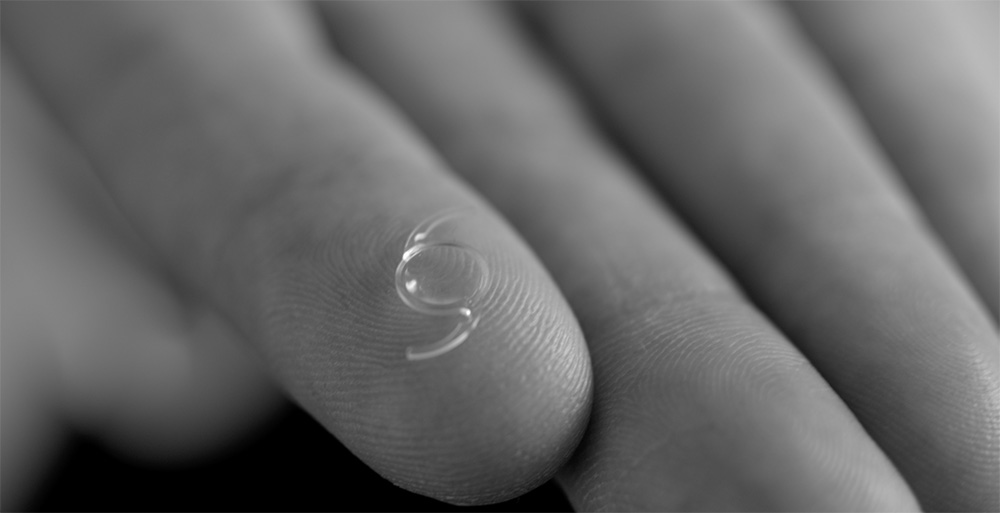Achieve Customized Results after Cataract Surgery with the Light Adjustable Lens™
Test drive your vision with this cutting-edge solution for cataract surgery.
Wilmington Eye is excited to offer patients one of the newest advancements in cataract surgery—the Light Adjustable Lens™. With the Light Adjustable Lens ™, a patient can customize the results of their cataract surgery after the procedure. This allows you to trial your new vision and make changes based on your exact visual needs. Patients who receive the Light Adjustable Lens™ achieve optimal visual results and are twice as likely to achieve crystal clear vision without the need for glasses following surgery.
How Does the Light Adjustable Lens™ Work?
The Light Adjustable Lens™ is an adjustable intraocular lens that replaces your eye’s natural lens. This advanced intraocular lens is made up of a photosensitive material that responds to ultraviolet light. After your cataract surgery, the shape and focusing power of the lens can be changed by your physician to improve your vision.
Following your cataract surgery, you’ll be able to return home to heal from the procedure and “test drive” your new vision. As you return to your daily activities, you may notice small changes you’d like to make to your vision. Approximately 3 weeks after your procedure, you’ll visit your surgeon and begin light treatments to customize your vision and achieve optimal surgical results.

Fixed vs Adjustable Lenses
Once implanted in the eye, fixed intraocular lenses cannot be changed. This means that you must make decisions about what you want the outcomes of your surgery to be well before the surgery takes place. A patient who chooses a monofocal lens must choose whether they want to see clearly at near distances or at far away distances. Or you may choose a multifocal lens which allows you to see at various distances. Whatever choice you make, the results cannot be changed after surgery.
With fixed lenses, a person must make decisions based before their surgery on what they hope to achieve postoperatively. With adjustable lenses like the Light Adjustable Lens™, you don’t have to make such a difficult decision before surgery. You choose how well you want to see at various distances after surgery, once you’ve tried out the lens. Your surgeon can adjust the lens and optimize your vision based on your unique preferences and lifestyle requirements.
Why Choose the Light Adjustable Lens™?
Personalized Vision
Unlike traditional or “fixed” intraocular lenses, the LAL offers a unique advantage: it can be adjusted after surgery. This means you and your surgeon can fine-tune your vision to meet your specific needs, ensuring optimal clarity and reduced dependence on glasses.
Eliminate Glasses
Using targeted ultraviolet light, minor tweaks can be made to the lens’ shape and curvature, providing the sharpest vision possible. Patients that receive the Light Adjustable Lens™ are more likely to achieve 20/20 following cataract surgery and less likely to need glasses or contacts.
Flexibility and Control
With the Light Adjustable Lens™, you aren’t locked into your initial surgical results. As your vision stabilizes and your needs change, the lens can be re-adjusted, offering unmatched flexibility and total control over your eyesight.
Proven Results
Clinical studies have shown that patients with the Light Adjustable Lens achieve better visual outcomes compared to those with traditional lenses. Enjoy clearer, crisper vision whether you’re reading, driving, or engaging in your favorite activities.
The Light Adjustable Lens™ Process
Step 1: Cataract Removal and Lens Implantation
During cataract surgery, your surgeon will remove your clouded lens (the cataract) and replace it with the Light Adjustable Lens™. One eye is operated on first. Then, a week later, we will operate on your second eye. Both procedures are quick, safe, and similar to traditional cataract surgery.
Step 2: Healing Period
After the lens is implanted, your eyes will need time to heal. During this trial period, it will be important to assess your vision. Your surgeon will also monitor your visual acuity and healing.
Step 3: Initial Light Treatment
2-3 weeks after surgery, you’ll come in for your initial light treatment. You and your doctor will work together to determine what changes need to be made to achieve the best possible visual outcomes. Depending on your desired visual outcomes, your surgeon may determine that 1-3 light treatments are needed.
Step 4: Additional Customization Treatments
Using a device called the Light Delivery Device™, specialized UV light will precisely reshape your lens based on the visual correction that is needed to target your current prescription. These sessions are painless, non-invasive, and typically require only a few minutes. Additional treatments must be performed approximately 3 days apart.
Step 5: Lock-In Procedures
Once your ideal vision is achieved and optimal surgical results have been achieved, you will undergo two final “lock-in” treatments. These treatments happen 3 days apart and prevent further changes to your lenses, ensuring stable and lasting results.
Additional Considerations for the LAL
The Light Adjustable Lens delivers truly personalized vision correction after cataract surgery.If you or a loved one are considering the revolutionary Light Adjustable Lens (LAL) for your cataract surgery, it’s important to consider all aspects of this advanced offering.
Cost
Unlike monofocal lenses which are fully covered by insurance (including Medicare), the Light Adjustable Lens is not covered by insurance and must be paid for out of pocket by the patient prior to surgery.
Eliminate Sun Exposure
UV light from the sun may alter the shape of your lens while your vision is still in the adjustment phase. To prevent this, patients are required to wear UV protective glasses when outdoors and eliminate sun exposure until both lock-in procedures have been completed.
Additional Appointments
The postoperative phase for the Light Adjustable Lens involves multiple visits to your surgeon after your initial cataract surgeries. Patients may need anywhere from 4 to 6 additional appointments.
